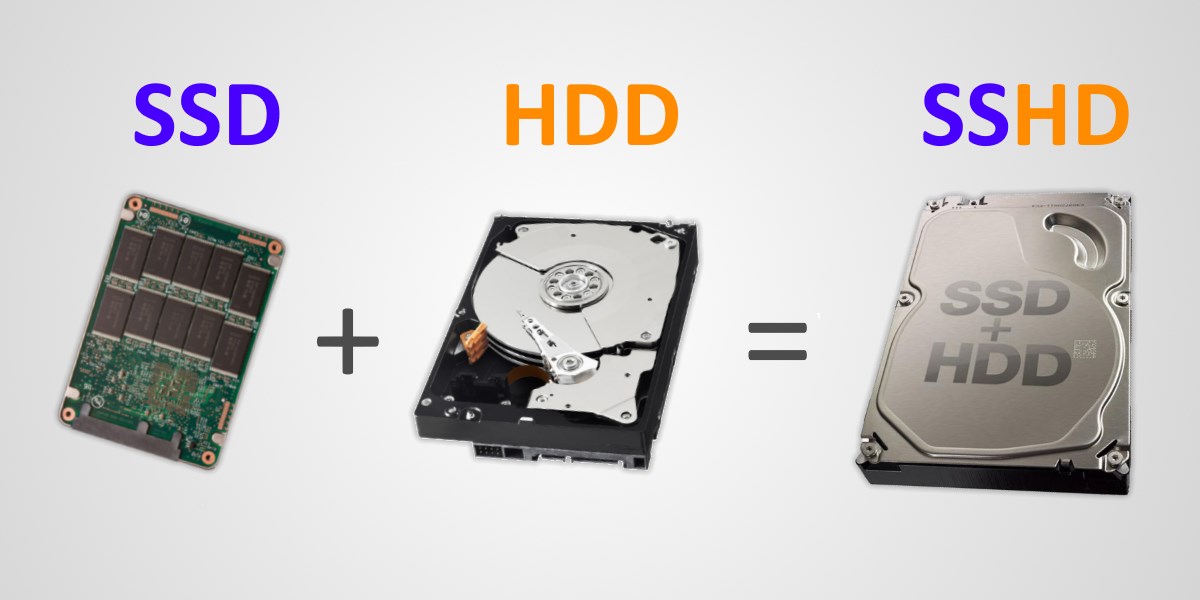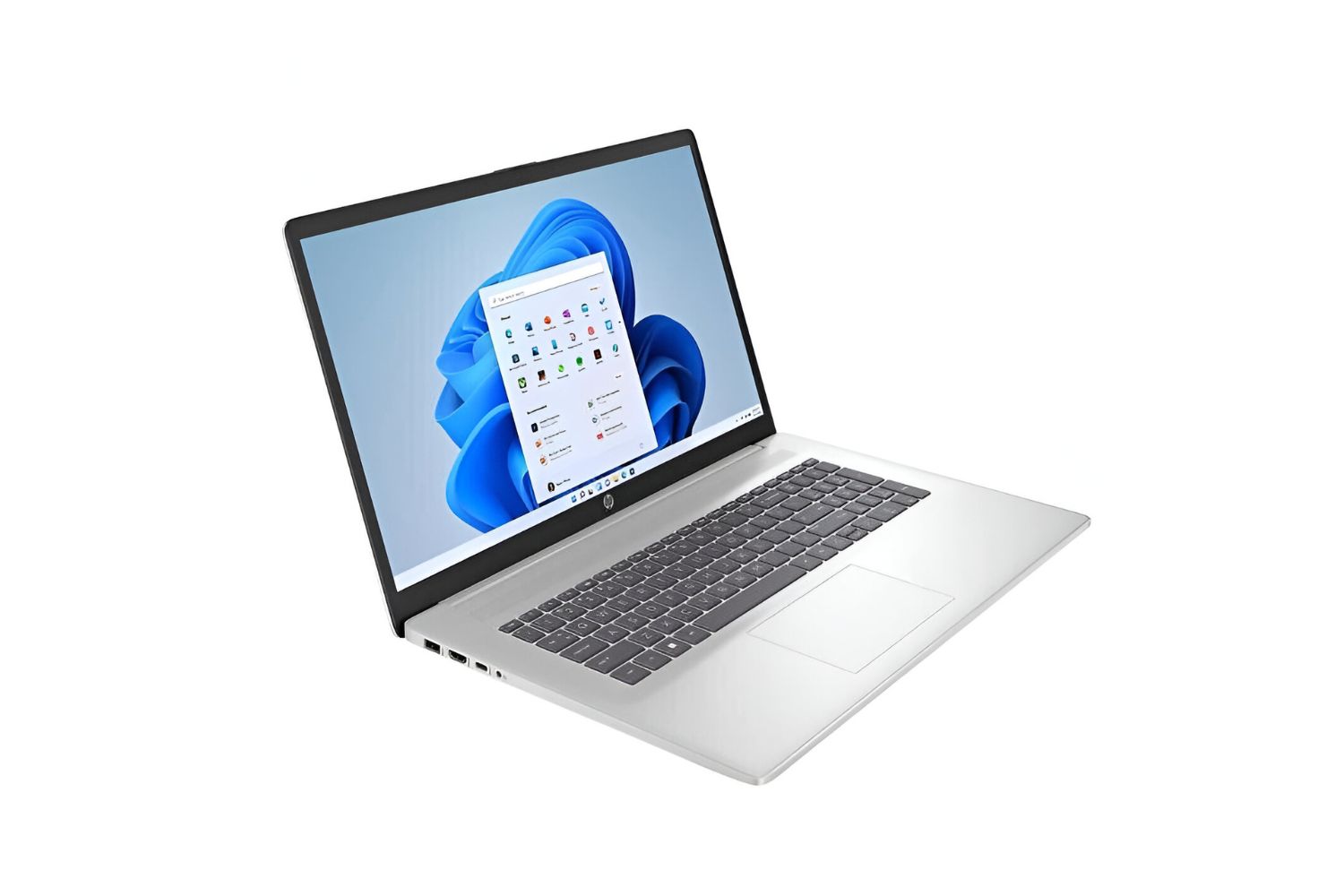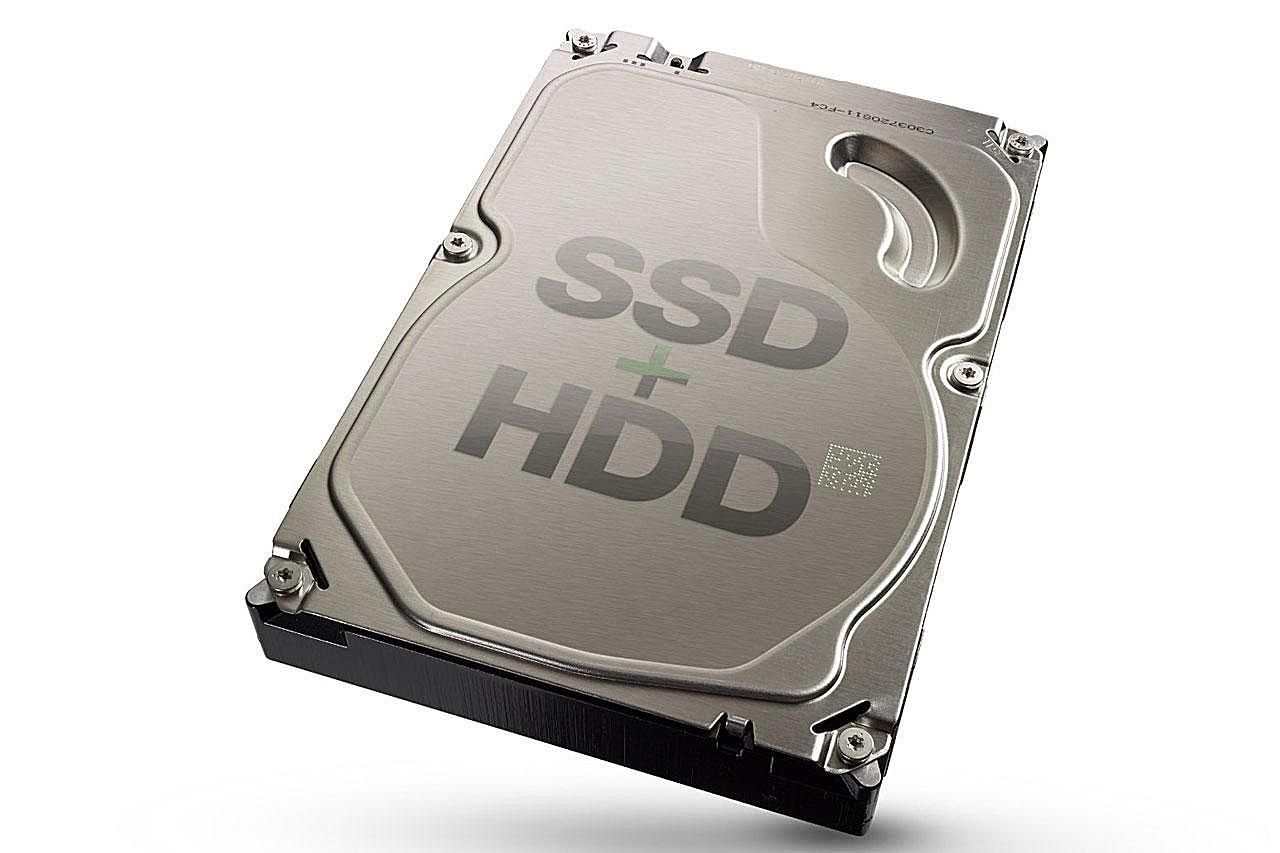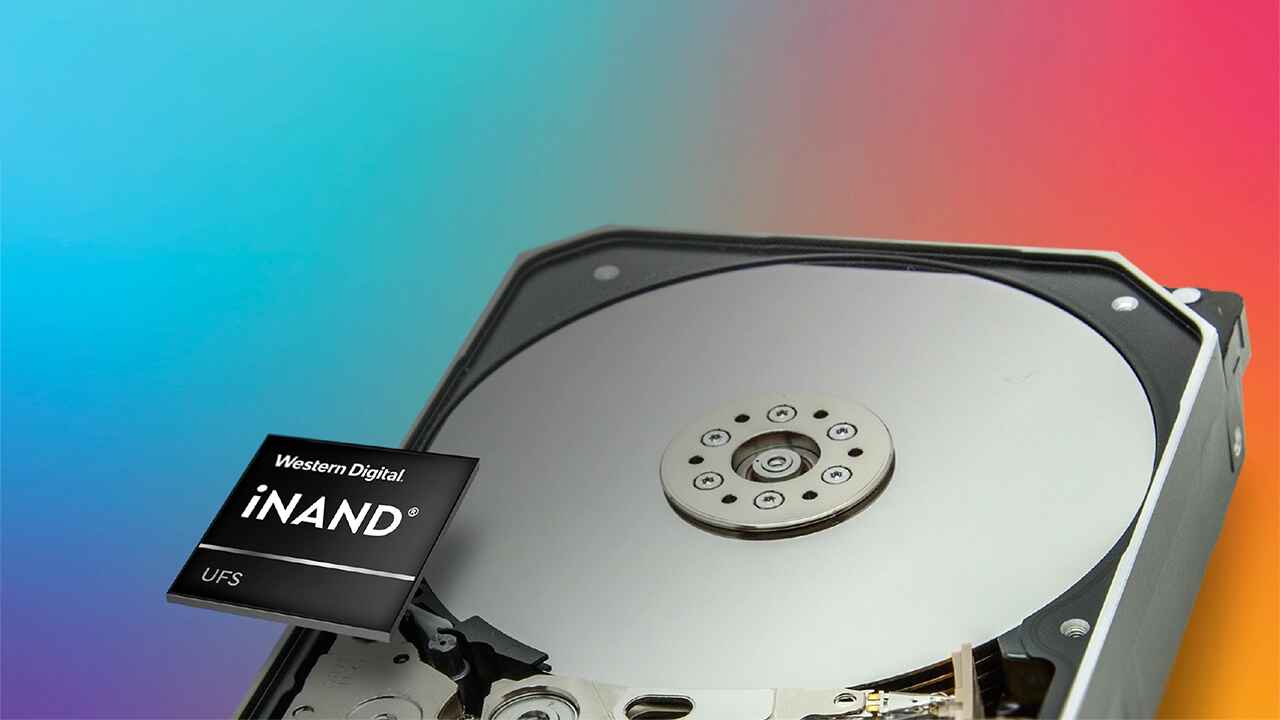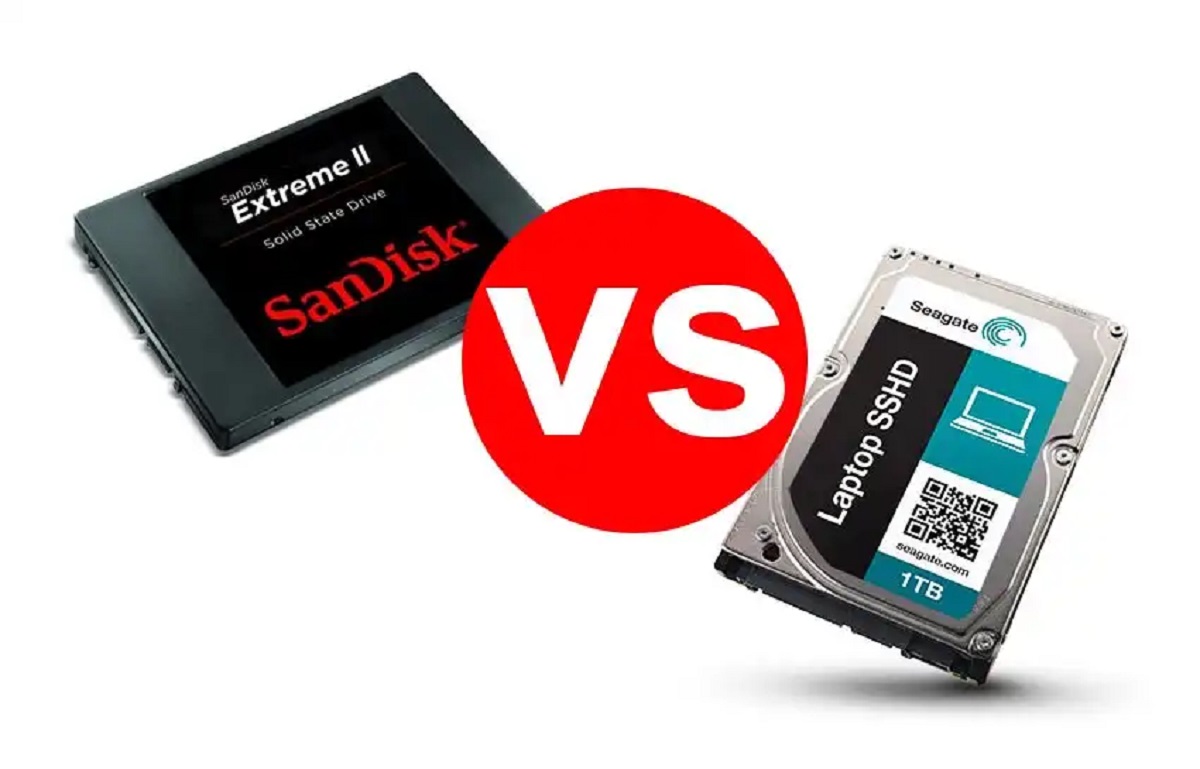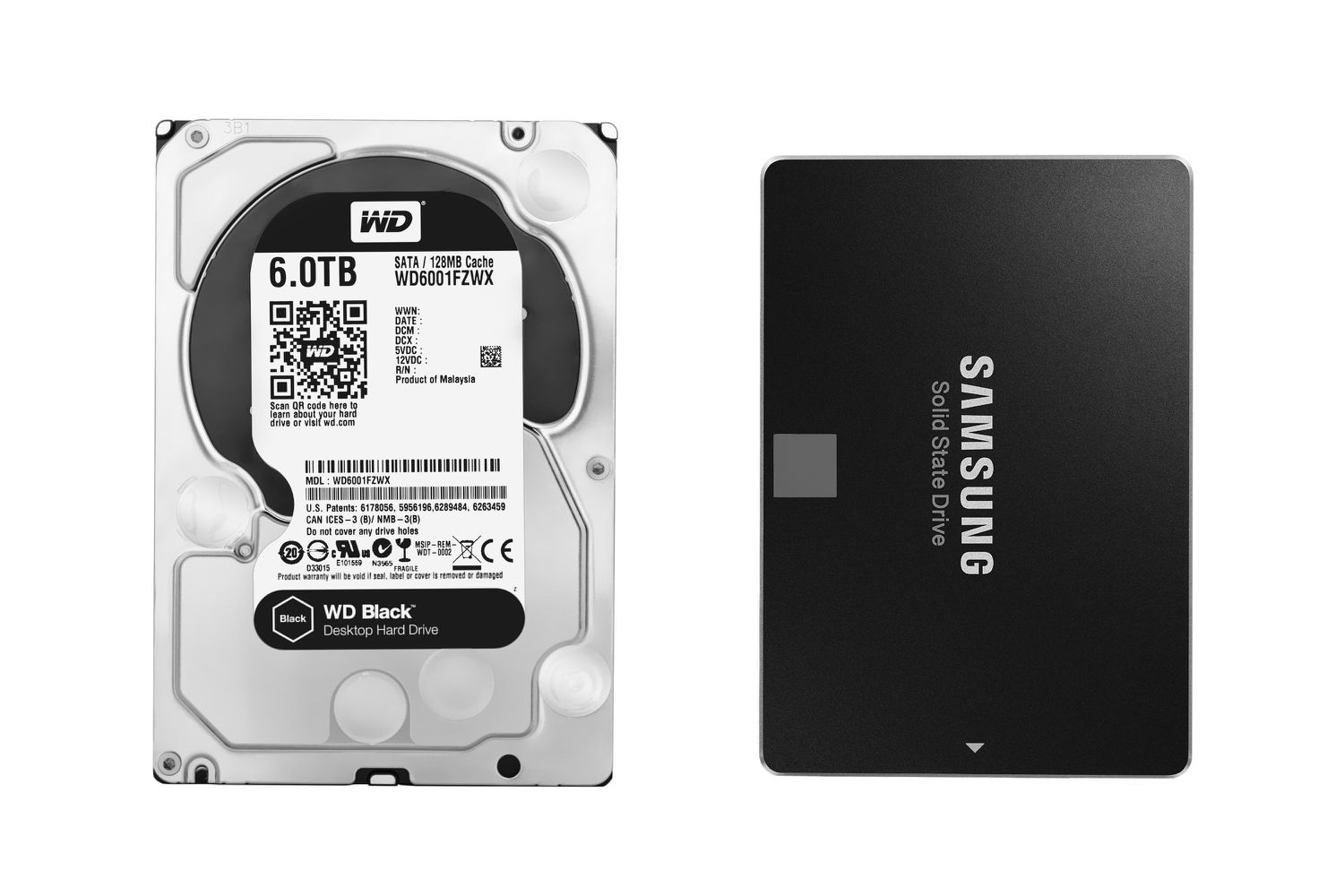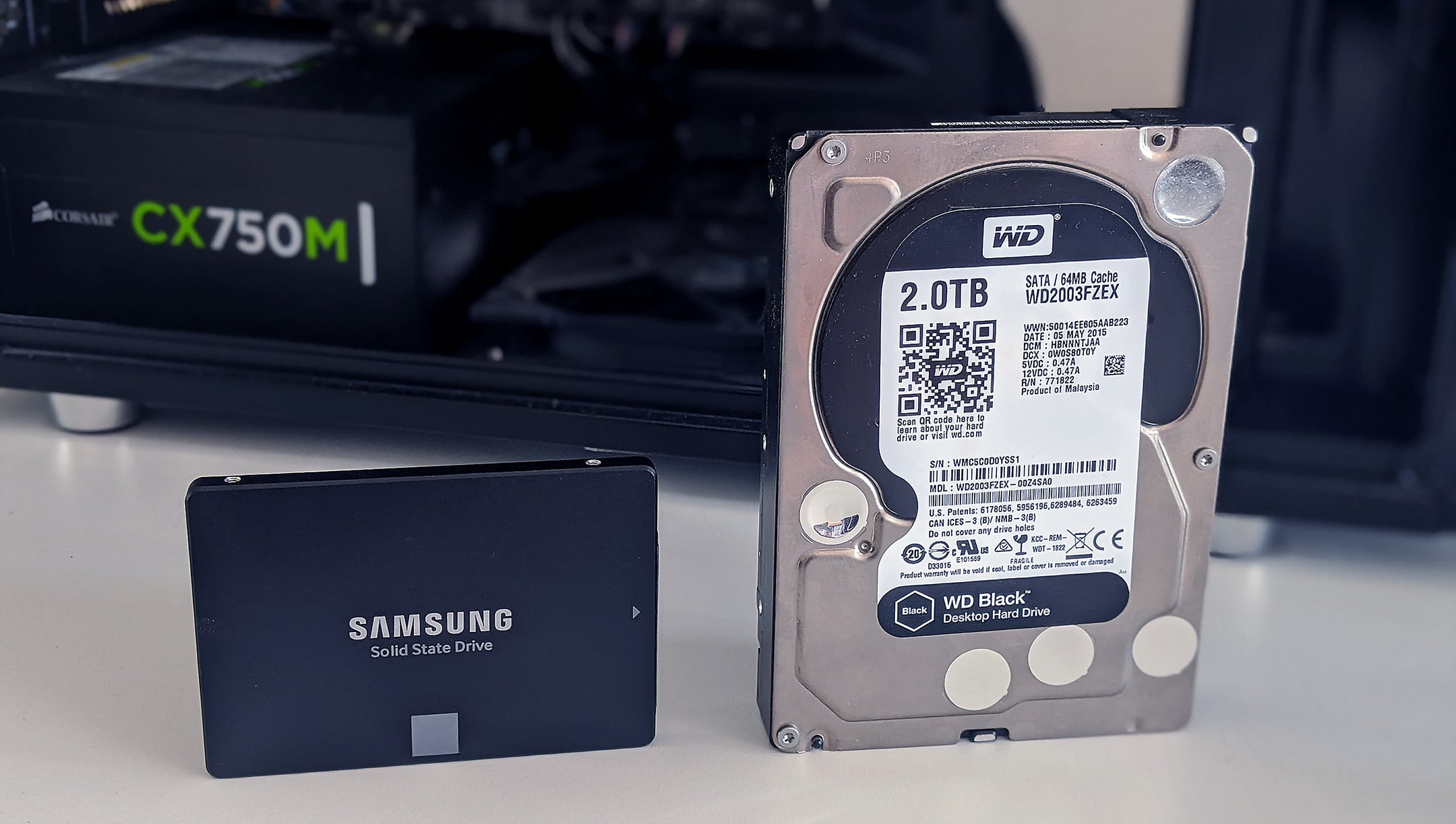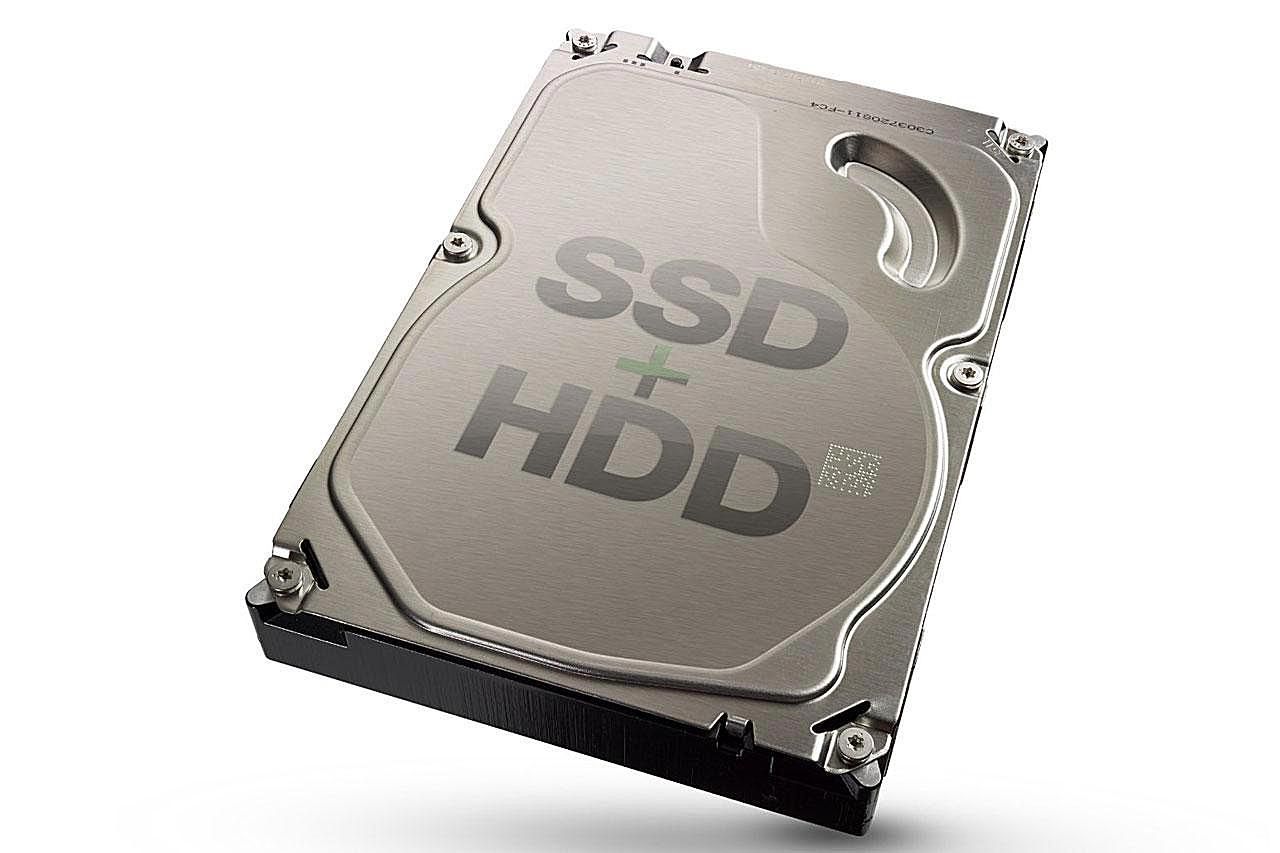Introduction
In the world of storage, there are many options to choose from, each with its own unique advantages and disadvantages. Two popular choices are Solid State Drives (SSD) and Hybrid Drives. Both offer increased storage capabilities and performance improvements compared to traditional hard disk drives (HDD). However, they differ in terms of technology, speed, reliability, and cost.
SSD, as the name suggests, is a storage device that uses solid-state memory to store data. It has no moving parts, making it more resistant to physical wear and tear and offering faster data access speeds. Hybrid Drives, on the other hand, combine the technology of HDDs and SSDs. They consist of a traditional hard drive that is complemented by a smaller amount of solid-state memory, which acts as a cache.
In this article, we will explore the pros and cons of SSDs and Hybrid Drives, and compare their performance in various aspects such as speed, reliability, power efficiency, storage capacity, and cost. By understanding the characteristics and differences between these two storage options, you will be able to make an informed decision when choosing the best drive for your needs.
Definition of Solid State Drive (SSD)
A Solid State Drive (SSD) is a storage device that uses flash memory to store and retrieve data. Unlike traditional hard disk drives (HDD), which use spinning disks and magnetic platters to read and write data, SSDs have no moving parts. This makes them more reliable and durable, as there are no mechanical components that can fail due to wear and tear.
SSDs are composed of NAND flash memory chips, which store data electronically. When data needs to be accessed, the SSD retrieves it by manipulating the electrical charge of individual memory cells. This process allows for much faster data transfer speeds compared to HDDs, as there are no physical limitations of mechanical read/write heads that need to physically move to specific locations on a spinning disk.
In addition to speed, SSDs offer several other advantages. First, they are more resistant to shocks and vibrations, making them ideal for portable devices like laptops and tablets. Second, they generate less heat and consume less power than HDDs, resulting in improved energy efficiency and longer battery life for mobile devices. Finally, SSDs produce virtually no noise, as there are no moving parts that can create vibrations or generate sound.
Despite their many advantages, SSDs do have some limitations. The main drawback is their higher cost per unit of storage compared to HDDs. This is primarily due to the more expensive flash memory technology used in SSDs. As a result, SSDs typically offer lower storage capacities at higher price points. However, with advancements in technology and increased competition, SSD prices have been steadily decreasing over time.
In summary, Solid State Drives (SSDs) are storage devices that utilize flash memory technology to provide fast data access, reliability, durability, energy efficiency, and silent operation. While they tend to have higher costs and lower storage capacities compared to HDDs, their numerous advantages have made them increasingly popular in a wide range of applications, from home computers to enterprise storage systems.
Definition of Hybrid Drive
A Hybrid Drive, also known as a Solid State Hybrid Drive (SSHD), is a storage device that combines the technology of both Solid State Drives (SSD) and traditional Hard Disk Drives (HDD). It aims to provide the benefits of both storage technologies in a single device.
A Hybrid Drive consists of a conventional hard drive with a larger storage capacity and a smaller amount of solid-state memory, typically NAND flash memory. The solid-state memory acts as a cache, storing frequently accessed data for quicker retrieval. This caching mechanism allows the drive to provide SSD-like performance for commonly used files and applications, while still offering the larger storage capacity of an HDD.
The key advantage of a Hybrid Drive is its ability to offer faster data access speeds compared to an HDD alone, at a more affordable price point than a full SSD. By intelligently caching frequently accessed data, the drive can provide quicker response times for applications and files that are used frequently, while still benefiting from the larger storage capacity of the hard drive portion.
Hybrid Drives utilize specialized algorithms and firmware to determine which data should be cached in the solid-state memory. Frequently used data is identified and stored in the cache, while less frequently used data remains on the spinning hard drive. This caching process is dynamic and adaptive, which means that the drive learns over time which data should be cached to optimize performance for the user’s specific usage patterns.
One of the key benefits of a Hybrid Drive is its simplicity in terms of installation and operation. It can be used as a drop-in replacement for a traditional hard drive, requiring no additional hardware or software configurations. This plug-and-play nature makes it an attractive option for users who want to upgrade their storage without having to deal with the complexities of SSD migration.
However, it’s important to note that while a Hybrid Drive provides improved performance compared to an HDD, it generally does not match the speed and responsiveness of a full SSD. The caching mechanism can significantly boost performance for frequently accessed data, but for larger files or applications that exceed the cache capacity, performance may be closer to that of a traditional hard drive.
In summary, a Hybrid Drive combines the technologies of both Solid State Drives and Hard Disk Drives to offer a balance of speed and storage capacity. By utilizing solid-state cache memory, Hybrid Drives can deliver improved performance for frequently accessed data while still providing the larger storage capacities of traditional hard drives. They offer a cost-effective and easy-to-install upgrade option for users looking to enhance their storage performance without fully adopting SSD technology.
Pros and Cons of Solid State Drive (SSD)
Solid State Drives (SSDs) have gained popularity in recent years due to their numerous advantages over traditional hard disk drives (HDDs). However, they also have their own set of drawbacks. Let’s explore the pros and cons of SSDs:
Pros
- Speed: One of the biggest advantages of SSDs is their incredible speed. They offer significantly faster data transfer rates and quicker access times compared to HDDs. This means faster boot-up times, quicker file loading, and improved overall system responsiveness.
- Reliability and Durability: Since SSDs have no moving parts, they are less prone to mechanical failures and physical damage caused by bumps or drops. This makes them more reliable and durable, providing peace of mind that your data will be safe and secure.
- Power Efficiency: SSDs consume less power than HDDs, resulting in improved battery life for laptops and lower electricity bills for desktop computers. This is particularly beneficial for portable devices where energy efficiency is crucial.
- No Noise: With no moving parts, SSDs operate silently. Say goodbye to the irritating whirring sound of spinning disks that HDDs produce. SSDs offer a quiet and noise-free computing experience.
- Compact and Lightweight: SSDs are smaller and lighter than HDDs, making them ideal for thinner and lighter laptops, ultrabooks, and other portable devices. The compact form factor also allows for more flexibility in terms of installation and storage options.
Cons
- Higher Cost: SSDs are generally more expensive than HDDs, especially when it comes to higher storage capacities. This cost differential can make it challenging for users who require large amounts of storage without breaking the bank.
- Lower Storage Capacity: While SSDs have been increasing in capacity over time, they still tend to offer smaller storage capacities compared to HDDs, especially at more affordable price points. This can be a limitation for users who need to store a large amount of data.
- Limited Lifespan: Although SSDs are highly reliable, they have a limited number of program/erase (P/E) cycles. Over time, the memory cells can degrade, affecting the drive’s performance and lifespan. However, modern SSDs are equipped with advanced wear-leveling algorithms and data management techniques to minimize this issue.
- Performance Degradation with Full Capacity: SSDs can experience a decline in performance when nearing their full capacity. Due to the nature of flash memory, which requires empty blocks to write new data, SSDs can become slower when they run out of available space. However, this issue can be mitigated through proper maintenance and utilizing trim or garbage collection features.
In summary, Solid State Drives (SSDs) offer remarkable speed, reliability, power efficiency, silent operation, and a compact form factor. However, their higher cost, limited storage capacity, and potential performance degradation at full capacity are factors to consider when choosing an SSD for your storage needs.
Pros and Cons of Hybrid Drive
Hybrid Drives, also known as Solid State Hybrid Drives (SSHDs), combine the advantages of both Solid State Drives (SSDs) and traditional Hard Disk Drives (HDDs). While they offer a balance between speed and storage capacity, they also have their own set of pros and cons. Let’s explore them:
Pros
- Improved Performance: The main advantage of a Hybrid Drive is its ability to deliver improved performance compared to a traditional HDD. By using solid-state cache memory, frequently accessed files and applications can be stored for quicker retrieval, resulting in faster system boot-ups, faster application launching, and improved overall responsiveness.
- Cost-Effective: Hybrid Drives offer a more affordable option compared to full SSDs. They provide a balance between the performance benefits of solid-state memory and the larger storage capacities of HDDs. This makes them a cost-effective solution for users who want a performance boost without the higher price tag of an SSD.
- Easy Installation: Hybrid Drives can be installed as a drop-in replacement for a regular HDD, requiring no additional hardware or software configurations. This makes them a convenient upgrade option for users who want to enhance their storage performance without undergoing the complexities of SSD migration.
- Large Storage Capacity: Hybrid Drives offer larger storage capacities compared to SSDs at a similar price point. This makes them suitable for users who require substantial storage space for their files, including large media libraries, games, and other data-heavy applications.
- Adaptive Performance: Hybrid Drives use intelligent caching algorithms to determine which files and applications should be stored in the solid-state cache memory. Over time, the drive learns the user’s usage patterns and optimizes the caching process accordingly, providing improved performance for frequently accessed data.
Cons
- Not as Fast as SSDs: While Hybrid Drives provide improved performance compared to HDDs, they generally cannot match the speed and responsiveness of full SSDs. Larger files or applications that exceed the cache capacity may perform closer to a traditional hard drive, resulting in slower data access speeds.
- Caching Limitations: Hybrid Drives rely on the caching mechanism to provide improved performance. However, if certain files or applications are not frequently accessed, they may not be stored in the cache, resulting in slower access times. This means performance benefits may vary depending on usage patterns.
- Limited SSD Capacity: Hybrid Drives typically have a smaller amount of solid-state memory compared to full SSDs. This limits the amount of data that can be stored in the cache, potentially impacting performance for larger files or applications that do not fit within the cache size.
- Higher Cost than HDDs: While Hybrid Drives are more affordable than full SSDs, they are still generally more expensive than traditional HDDs. Users who are primarily concerned with storage capacity may find that HDDs offer a better price per terabyte ratio.
- Cache Adaptation Time: Hybrid Drives may require some time to adapt and optimize their caching algorithms based on the user’s usage patterns. Initially, users may not experience the full performance benefits until the drive has learned and adjusted to their specific needs.
In summary, Hybrid Drives offer a cost-effective solution that combines improved performance through caching with the larger storage capacities of traditional HDDs. Although they may not match the speed of full SSDs, they provide a balanced option for users who want a performance boost without compromising on storage capacity.
Performance Comparison: Speed
When it comes to storage devices, speed is a crucial factor to consider. Let’s compare the speed performance of Solid State Drives (SSDs) and Hybrid Drives to see how they stack up against each other:
Solid State Drives (SSDs)
SSDs are renowned for their exceptional speed and responsiveness. They offer significantly faster data transfer rates and quicker access times compared to traditional Hard Disk Drives (HDDs). This is primarily due to the absence of moving parts and the use of flash memory technology.
SSDs excel in sequential read and write speeds, making them ideal for tasks that involve large file transfers, such as video editing or gaming. They can deliver read speeds of up to several gigabytes per second (GB/s) and write speeds of up to several hundred megabytes per second (MB/s). These faster speeds result in reduced loading times for applications and faster boot-up times for operating systems.
Furthermore, SSDs offer excellent random access speeds, which refer to the ability to quickly access and retrieve data from various locations on the drive. This is crucial for everyday tasks like opening files, launching applications, and multitasking. SSDs can perform random reads at speeds of tens or hundreds of thousands of Input/Output Operations Per Second (IOPS), enabling seamless and snappy performance.
Hybrid Drives
Hybrid Drives combine the technologies of both SSDs and HDDs to deliver a balance between speed and storage capacity. While they do not provide the same level of speed as full SSDs, they offer improved performance compared to traditional HDDs.
The solid-state cache memory in Hybrid Drives allows for faster access to frequently accessed data. This results in improved read and write speeds for files stored in the cache. However, for data that exceeds the cache capacity, the performance will be closer to that of a conventional hard drive.
The speed benefits of Hybrid Drives are most noticeable when it comes to frequently used applications, operating system files, and commonly accessed data. These files are typically stored in the cache memory and can be accessed much faster than if they were stored on a traditional HDD. However, larger files or applications that do not fit within the cache may experience slower performance similar to that of an HDD.
Which is Faster?
In terms of raw speed, Solid State Drives (SSDs) are the clear winners. SSDs outperform Hybrid Drives in sequential and random read/write speeds, offering faster data transfer rates and quicker access times across the board. This makes them ideal for users who require high-performance storage for demanding tasks or frequently accessed files.
However, it’s worth noting that Hybrid Drives can still provide a noticeable speed boost compared to traditional HDDs, thanks to their caching mechanism. The solid-state cache memory allows for improved performance for frequently accessed data, making Hybrid Drives a viable option for users who want a performance upgrade without fully investing in a full SSD.
In summary, when it comes to speed, Solid State Drives (SSDs) are the clear winners, offering significantly faster data transfer rates and quicker access times compared to Hybrid Drives. However, Hybrid Drives can still provide improved speed performance compared to traditional HDDs, thanks to their caching mechanism.
Performance Comparison: Reliability and Durability
Reliability and durability are essential factors to consider when evaluating storage devices. Let’s compare the reliability and durability of Solid State Drives (SSDs) and Hybrid Drives:
Solid State Drives (SSDs)
SSDs are known for their high reliability and durability, primarily due to their lack of moving parts. Unlike traditional Hard Disk Drives (HDDs) that rely on spinning disks and mechanical read/write heads, SSDs use flash memory technology to store and retrieve data.
Since SSDs have no mechanical components, they are less susceptible to failure caused by physical wear and tear. This makes them more reliable and durable than HDDs, making them an excellent choice for both personal and professional use.
SSDs are highly resistant to shocks, vibrations, and drops, making them ideal for portable devices such as laptops, tablets, and gaming consoles. This durability ensures that your data remains safe and secure, even when your device experiences rough handling or accidental drops.
In addition, the lack of moving parts reduces the risk of mechanical failures, such as motor or actuator malfunctions, which are common issues with HDDs. This translates to a lower chance of data loss and a longer lifespan for the drive.
Hybrid Drives
Hybrid Drives inherit the reliability and durability benefits of Solid State Drives (SSDs) for the solid-state cache portion. Since the cache memory in Hybrid Drives is typically based on flash memory technology, it shares similar characteristics with full SSDs in terms of reliability and durability.
However, it’s important to note that Hybrid Drives still have a traditional hard drive component for the larger storage capacity. This means that the reliability and durability of the HDD portion may not match that of an SSD.
While HDDs are generally reliable, they do have moving parts that can be subject to mechanical failures over time. The spinning disks and read/write heads of an HDD are more susceptible to wear and tear, making them more prone to failure compared to SSDs.
Therefore, when evaluating the reliability and durability of Hybrid Drives, it’s crucial to consider that the SSD portion provides enhanced reliability and durability, while the HDD portion carries a higher risk of mechanical failures.
Which is More Reliable and Durable?
In terms of reliability and durability, Solid State Drives (SSDs) have the advantage over Hybrid Drives. The lack of mechanical components in SSDs makes them more resistant to physical damage and less prone to failure caused by wear and tear. SSDs offer a higher level of reliability and durability, providing better data protection and a longer lifespan.
While the solid-state cache memory in Hybrid Drives offers similar reliability and durability to SSDs, the traditional HDD component can introduce a higher risk of mechanical failures. Users should consider the overall reliability and durability of the drive, taking into account the strengths and weaknesses of both the SSD and HDD portions.
In summary, when it comes to reliability and durability, Solid State Drives (SSDs) outperform Hybrid Drives. SSDs offer higher reliability and durability due to their lack of moving parts, reducing the risk of mechanical failures and providing better protection for your data.
Performance Comparison: Power Efficiency
Power efficiency is a significant consideration when selecting a storage device, particularly for portable devices and energy-conscious users. Let’s compare the power efficiency of Solid State Drives (SSDs) and Hybrid Drives:
Solid State Drives (SSDs)
SSDs consume significantly less power compared to traditional Hard Disk Drives (HDDs). This is primarily because SSDs have no moving parts and rely on flash memory technology for data storage and retrieval.
The absence of mechanical components, such as spinning disks and moving read/write heads, results in reduced power requirements. SSDs draw less power during both idle and active states, making them more energy-efficient and contributing to longer battery life for portable devices.
In addition, SSDs have faster data access times, which means they spend less time actively seeking and retrieving data. As a result, the drive spends less time in high-power operation, further reducing power consumption.
Overall, the power efficiency of SSDs translates into energy savings, lower electricity bills, and an extended battery life for laptops, tablets, and other mobile devices.
Hybrid Drives
Hybrid Drives inherit the power efficiency benefits of Solid State Drives (SSDs) for the solid-state cache portion of the drive, as it utilizes flash memory technology. This allows the cache to operate with lower power consumption compared to traditional HDDs.
However, it’s important to note that Hybrid Drives still have a traditional hard drive component for the larger storage capacity. HDDs consume more power compared to SSDs due to their mechanical nature and higher power requirements for disk rotation and read/write head movement.
While the power efficiency benefits of the solid-state cache memory help reduce power consumption during frequent data access, the overall power efficiency of a Hybrid Drive is not as efficient as a full SSD.
Which is More Power Efficient?
When it comes to power efficiency, Solid State Drives (SSDs) have the advantage over Hybrid Drives. SSDs consume less power overall due to their lack of moving parts and faster data access times.
While the solid-state cache memory of Hybrid Drives helps enhance power efficiency for frequently accessed data, the higher power consumption of the HDD portion offsets some of the benefits. As a result, the power efficiency of a Hybrid Drive is not as efficient as a full SSD.
For users who prioritize power efficiency, especially in terms of energy savings and extended battery life, investing in an SSD is the more suitable option.
In summary, Solid State Drives (SSDs) offer superior power efficiency compared to Hybrid Drives. The absence of mechanical parts in SSDs results in less power consumption, lower electricity bills, and extended battery life for portable devices.
Performance Comparison: Storage Capacity
Storage capacity is a crucial consideration when choosing a storage device, as it determines how much data you can store on your drive. Let’s compare the storage capacity of Solid State Drives (SSDs) and Hybrid Drives:
Solid State Drives (SSDs)
SSDs generally offer smaller storage capacities compared to traditional Hard Disk Drives (HDDs). This is because SSDs utilize flash memory technology, which is more expensive per unit of storage compared to the magnetic platters used in HDDs.
Lower-capacity SSDs typically start from around 128GB or 256GB, while higher-capacity options can reach up to several terabytes (TB) or more. However, as the storage capacity increases, so does the price, making higher-capacity SSDs more expensive compared to their lower-capacity counterparts.
SSDs are well-suited for users who prioritize speed, reliability, and power efficiency over large storage capacities. They are perfect for those who frequently access files and applications that require fast data transfer rates and quick access times, such as operating systems, software programs, and frequently used documents.
Hybrid Drives
Hybrid Drives offer a balance between the speed benefits of SSDs and the larger storage capacities of HDDs. They consist of a traditional hard drive with a smaller amount of solid-state cache memory.
The cache memory in Hybrid Drives is typically smaller in capacity compared to SSDs, ranging from a few gigabytes (GB) to several tens of gigabytes (GB). However, the hard drive component provides larger storage capacities, ranging from several hundreds of gigabytes (GB) to multiple terabytes (TB), depending on the drive.
This combination allows users to have the best of both worlds – faster access to frequently used files stored in the cache memory and larger storage capacity for less frequently accessed files and data stored on the hard drive.
Hybrid Drives are suitable for users who require a balance between performance and storage capacity. They are an excellent choice for individuals who need ample storage space for data-heavy applications, multimedia files, and extensive digital libraries, while still benefiting from improved performance for frequently used files.
Which Offers More Storage Capacity?
When it comes to storage capacity, Hybrid Drives have the advantage over SSDs. The combination of the solid-state cache memory and the hard drive component in Hybrid Drives allows for larger overall storage capacities compared to SSDs.
While SSDs offer smaller storage capacities, they are well-suited for users who prioritize speed and performance over storage capacity.
Hybrid Drives, on the other hand, strike a balance between performance and storage capacity, making them a suitable choice for users who require both. They offer ample storage space for various applications and files while still providing improved performance for frequently accessed data.
In summary, when it comes to storage capacity, Hybrid Drives offer larger capacities compared to SSDs. SSDs are ideal for users who prioritize speed and performance, while Hybrid Drives offer a balanced solution for users who need a combination of performance and ample storage space.
Performance Comparison: Cost
Cost is an important factor to consider when selecting a storage device. Let’s compare the cost factors associated with Solid State Drives (SSDs) and Hybrid Drives:
Solid State Drives (SSDs)
SSDs tend to be more expensive compared to traditional Hard Disk Drives (HDDs). The cost per unit of storage for SSDs is generally higher due to the advanced flash memory technology they utilize.
Lower-capacity SSDs, typically ranging from 128GB to 512GB, are more affordable compared to high-capacity options that can reach several terabytes (TB) or more. However, the price per gigabyte (GB) decreases as the storage capacity increases, meaning larger SSDs tend to offer a better cost per terabyte (TB) ratio.
The higher price of SSDs is mainly attributed to the more expensive production process of flash memory. This cost is gradually decreasing over time as technology advances and economies of scale come into play. As a result, SSDs have become more accessible and affordable for consumers.
SSDs are a suitable choice for users who prioritize the benefits of speed, reliability, and power efficiency over cost. They are ideal for individuals who require fast storage for demanding applications, such as gamers, video editors, and professionals working with large datasets.
Hybrid Drives
Hybrid Drives offer a more cost-effective solution compared to full SSDs. They provide a balance between the performance benefits of solid-state memory and the larger storage capacities of traditional HDDs at a more affordable price point.
The cost of Hybrid Drives varies depending on the capacity of the solid-state cache memory and the overall storage capacity of the drive. Generally, Hybrid Drives are more affordable compared to full SSDs with similar storage capacities.
Hybrid Drives are well-suited for budget-conscious users who are looking for a cost-effective upgrade option. They offer improved performance for frequently accessed data while still providing a larger storage capacity for less frequently accessed files.
Which is More Cost-Effective?
When it comes to cost-effectiveness, Hybrid Drives have the advantage over full SSDs. Hybrid Drives offer a balance between performance and cost by combining the faster solid-state cache memory with the larger storage capacity of HDDs.
While SSDs offer superior speed and performance, they tend to be more expensive, especially for higher-capacity options. This means that users looking for a larger storage capacity more economically will find Hybrid Drives to be a better choice.
Hybrid Drives provide a cost-effective solution for users who want an upgrade that offers improved performance while still taking advantage of larger storage capacities without the higher price tag of an SSD.
In summary, when considering cost, Hybrid Drives are the more cost-effective option compared to full SSDs. Hybrid Drives strike a balance between performance and affordability, making them a suitable choice for budget-conscious users who require a combination of improved performance and larger storage capacities.
Conclusion
When it comes to choosing between Solid State Drives (SSDs) and Hybrid Drives, it’s important to consider your specific needs and priorities. Both storage options offer unique advantages and trade-offs that can greatly impact your computing experience.
SSDs excel in terms of speed, reliability, power efficiency, and durability. They provide blazing-fast data transfer rates, quick access times, and improved energy efficiency. SSDs are an ideal choice for users who prioritize performance and are willing to invest in faster and more reliable storage.
On the other hand, Hybrid Drives strike a balance between performance and storage capacity. By combining solid-state cache memory and traditional hard drive technology, Hybrid Drives offer improved speed for frequently accessed data while still providing larger storage capacities. Hybrid Drives are a great option for users who want a cost-effective storage solution that offers some performance benefits without sacrificing storage space.
Before making a decision, it’s crucial to consider factors such as speed, reliability, power efficiency, storage capacity, and cost. Evaluate your specific needs and usage patterns to determine which features are most important to you.
If you require lightning-fast access to data, need a reliable and durable storage solution, and have budget flexibility, an SSD may be the best choice for you. Conversely, if you need a combination of performance and ample storage space at a more affordable price point, a Hybrid Drive can offer a suitable compromise.
In conclusion, both SSDs and Hybrid Drives provide significant improvements over traditional HDDs. SSDs offer unparalleled speed and reliability but come at a higher cost per unit of storage. Hybrid Drives offer a cost-effective solution with a balance of performance and storage capacity. Ultimately, the best choice depends on your individual needs, priorities, and budget constraints.









